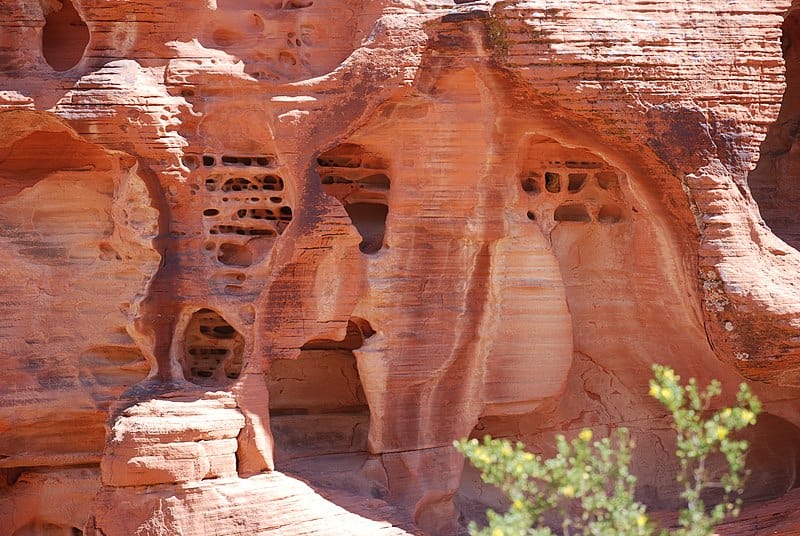
Weathering and erosion are two geological processes that play a key role in the formation and alteration of surface rocks. These processes are particularly important in shaping sedimentary rocks, but they can affect igneous and metamorphic rocks as well.
Weathering refers to the breakdown of rocks, soil, and minerals by the Earth’s atmosphere, water, and biological organisms. This process does not involve movement.
Erosion, on the other hand, is the process of moving the weathered particles from one location to another, usually through natural forces like water, wind, glaciers, and gravity.
The main difference between weathering and erosion is that the former doesn’t involve movement, while the latter does. Although the two processes are similar and often used interchangeably they are not identical.
| Aspect | Weathering | Erosion |
|---|---|---|
| Definition | The process of breaking down rocks and minerals at or near Earth’s surface. | The process of moving weathered materials from one place to another. |
| Type of Process | Static (involves no movement of rock material). | Dynamic (involves the movement of materials). |
| Mechanism | Can be chemical (changes in mineral composition) or physical (breakdown without chemical change). | Primarily physical movement by agents like water, wind, ice, or gravity. |
| Agents | Water, temperature changes, biological organisms, and chemical reactions. | Water, wind, ice, and gravity. |
| Effects on Landscape | Prepares rock for erosion by weakening and breaking it down. | Transports and deposits weathered material, reshaping landscapes. |
| End Result | Leads to the formation of soil and sediment. | Can lead to the formation of features like valleys, deltas, and sand dunes. |
| Examples | Frost wedging, oxidation, hydrolysis. | River erosion, wind erosion, glacial movement. |
Both processes are vital in shaping the Earth’s topography and play a crucial role in soil formation and the recycling of geological and nutrient materials. However, while weathering breaks down and weakens the material, erosion transports the debris.
But that’s just the short story.
What causes erosion?
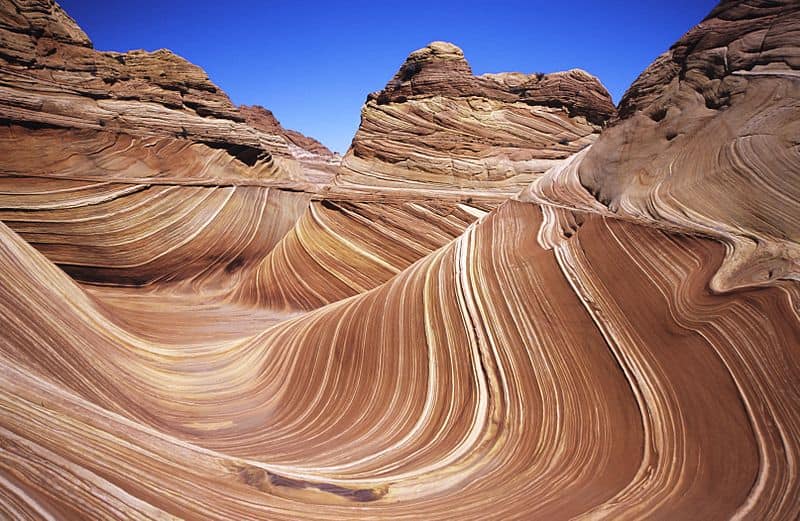
Erosion is the process by which natural forces such as water, wind, and ice transport rocks and soil from one location to another. It’s a dynamic process, often visible in the dramatic cliffs carved by rivers or the sculpted dunes in vast deserts. But erosion’s handiwork isn’t always so apparent. It works ceaselessly, grain by grain, particle by particle, in a relentless quest to level mountains and fill valleys.
Erosion occurs in various forms, from the slow movement of soil to the rapid carving of canyons by rivers. It’s a process that not only shapes our natural landscapes but also significantly impacts human activities and ecosystems.
Erosion is the result of a complex interplay of natural forces, with water, wind, ice, and gravity playing key roles. However, water is probably the most impactful agent of erosion. Water can cause erosion in multiple ways.
Rainfall and Surface Runoff
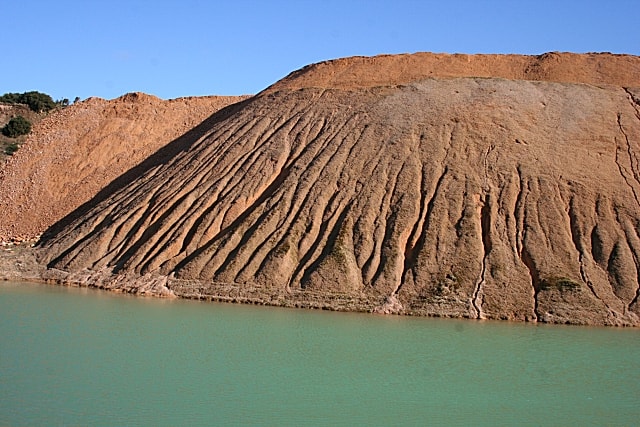
Rainfall, particularly its intensity and frequency, plays a crucial role in erosion. When raindrops hit the earth, they can dislodge soil particles, a process known as splash erosion. The runoff generated by rainfall can then transport these particles away, further contributing to soil erosion. The impact is most pronounced on slopes and in areas where vegetation cover is sparse.
Rivers and Streams
Rivers and streams, with their continuous flow, are powerful erosive forces. They erode their banks and beds, carrying sediment downstream. This action creates various landforms, such as river valleys, canyons, and deltas. The Grand Canyon is a testament to the erosive power of the Colorado River, for instance.
Waves and Coastal Erosion
Coastal areas experience erosion due to the relentless action of waves. Waves, driven by winds and tides, attack the shoreline, eroding cliffs, and beaches. This process is responsible for shaping coastlines, forming sea cliffs, and creating beach landscapes.
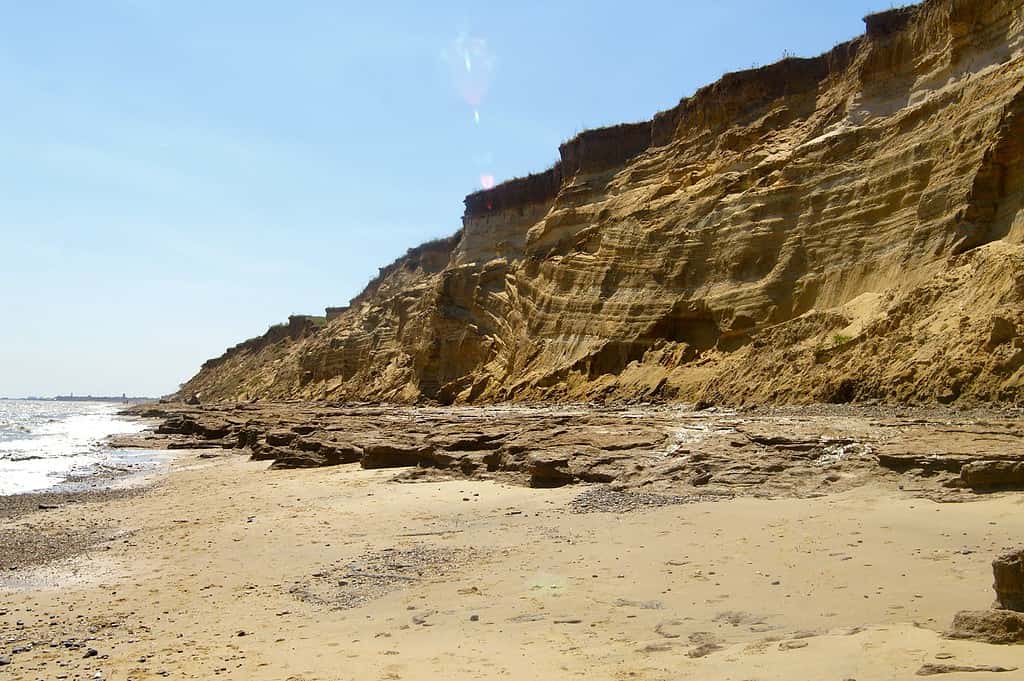
Wind
In areas where there is little vegetation to protect the soil, wind can be a significant erosive force. Wind erosion is particularly evident in arid and semi-arid regions, where it can remove vast amounts of topsoil. This process can create unique landforms like sand dunes and is also responsible for phenomena like dust storms.
Ice and cold
In colder climates, ice plays a significant role in erosion. Glaciers, massive bodies of moving ice, erode the land as they advance and retreat. They can carve deep valleys and fjords, sculpt mountain peaks, and transport large amounts of rock and sediment. The Yosemite Valley in the United States is a classic example of a landscape shaped by glacial erosion.
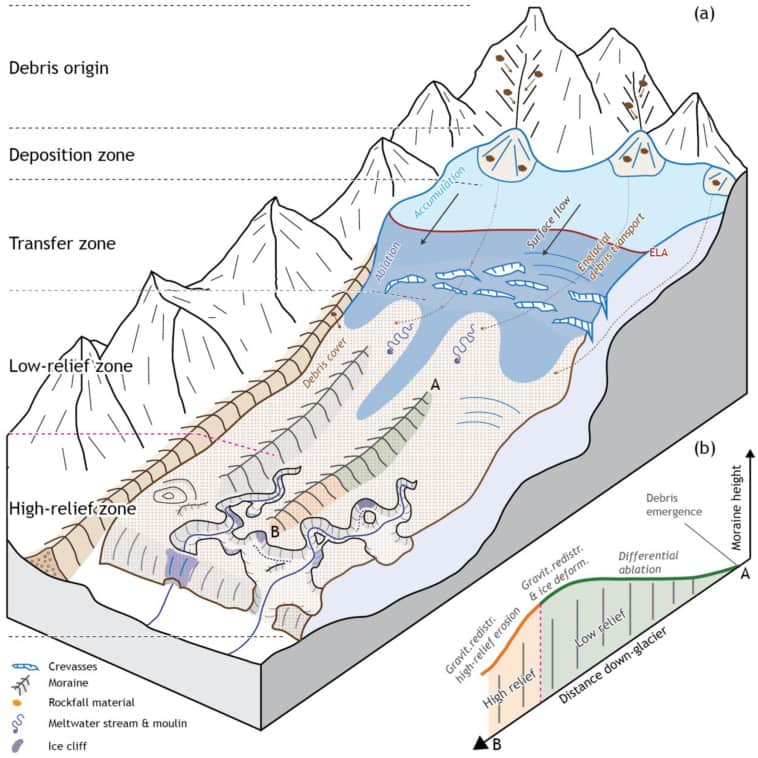
Human Activities
While erosion is a natural process, human activities have significantly increased its rate in many parts of the world. Deforestation, agricultural practices, urban development, and mining disrupt the natural soil structure and vegetation cover, making the land more susceptible to erosion by water and wind.
Gravity
Gravity is an often overlooked but fundamental force in the erosion process. It influences the movement of water, ice, and even wind-blown particles. Landslides, a form of mass wasting, are a direct result of gravity’s pull, causing rapid and significant erosion.
How erosion can make new rocks
Erosion is a key factor in the Earth’s surface geological processes. It significantly influences the formation and alteration of various types of rocks and not only shapes landscapes but also participates actively in the rock cycle, contributing to the creation of sedimentary rocks and the transformation of existing rock formations. Let’s explore how erosion impacts different types of rocks and their characteristics.
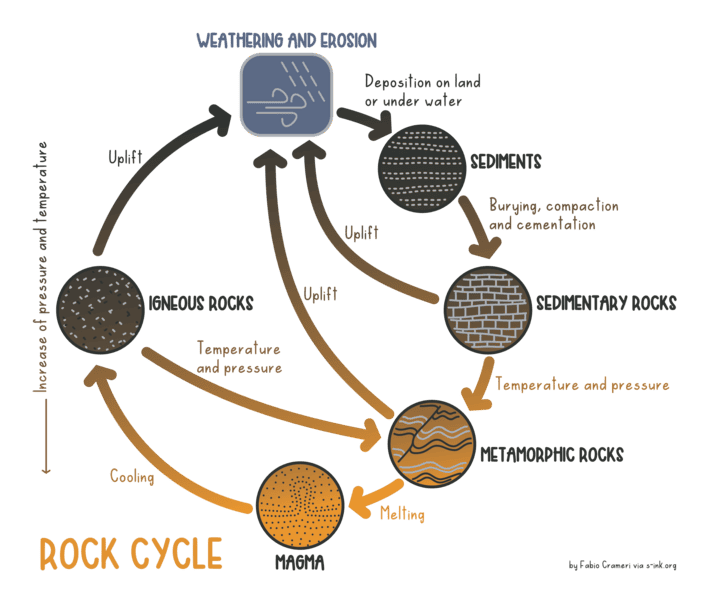
Compaction and Cementation
The most direct product of erosion in the rock cycle is sedimentary rock. Weathering breaks down existing rocks into smaller particles. These particles, known as sediments, are then transported to different locations. Over time, these sediments are deposited in layers, often in bodies of water like rivers, lakes, and oceans.
Once deposited, these layers of sediment undergo compaction and cementation. Compaction occurs as the weight of overlying sediments compresses the lower layers, squeezing out water and reducing the space between particles. Cementation involves minerals precipitating from water and binding the sediment particles together. This process eventually leads to the formation of sedimentary rocks, such as sandstone, shale, and limestone.
Alteration of existing rocks
Erosion also alters existing rocks through physical and chemical weathering. Physical weathering breaks down rocks into smaller pieces without changing their chemical composition. This can occur through processes like freeze-thaw cycles, where water enters cracks in rocks, freezes, expands, and eventually splits the rock apart.
Impact on Igneous and Metamorphic Rocks
Igneous and metamorphic rocks, formed under high pressure and temperature conditions, can be exposed to the Earth’s surface through uplift and erosion of overlying materials. Once exposed, these rocks are subject to erosion and weathering. Over time, erosion can significantly alter their appearance and composition, often leading to the creation of new sedimentary rocks from their sediments.
Forming Soil from Rock
Another significant aspect of erosion’s impact on rocks is soil formation. Soil is essentially a mixture of mineral particles, organic material, water, and air. The mineral component of soil is derived from the breakdown of rocks through erosion and weathering. This process contributes to the fertility and structure of the soil, which is crucial for plant growth and ecosystem health.
What causes Weathering?
If you remember, the difference between weathering and erosion is that erosion moves particles around, whereas weathering just breaks them down.
Before erosion can transport materials, weathering must first break down the rocks. This process involves the disintegration of rock at its original location through physical, chemical, and biological means. Physical weathering, such as freeze-thaw cycles, breaks rock apart. Chemical weathering, on the other hand, involves reactions that alter the rock’s mineral composition, like the rusting of iron-rich rocks. Biological weathering includes the effects of living organisms, such as roots growing into and splitting rocks.
Physical (Mechanical) Weathering
Temperature Changes
One of the primary causes of physical weathering is temperature fluctuations. In regions with significant temperature variations between day and night or across seasons, rocks can expand and contract. This repeated expansion and contraction can cause rocks to crack and eventually break apart.
Freeze-Thaw Cycles
In colder climates, the freeze-thaw cycle is a significant factor in weathering. Water seeps into cracks in rocks, freezes, and expands, exerting pressure on the rock. As this process repeats with each freeze-thaw cycle, the rock eventually fractures and disintegrates.
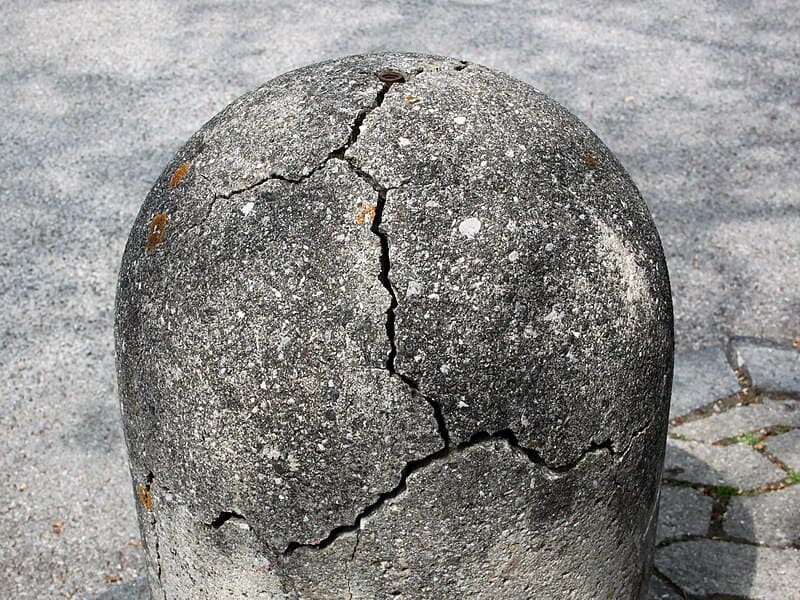
Crystal Growth
The growth of salt or ice crystals within the pores or cracks of rocks can also lead to weathering. As these crystals grow, they exert outward pressure on the rock, causing it to weaken and break apart.
Biological Activity
The actions of plants and animals can contribute to physical weathering. Plant roots can grow into rock cracks and as they expand, they pry the rock apart. Burrowing animals can also displace rocks, leading to physical breakdown.
Chemical Weathering
The dissolving action of water
Water plays a central role in chemical weathering. It can dissolve minerals within rocks, leading to their breakdown. Rainwater, slightly acidic due to dissolved carbon dioxide, can react with minerals in rocks, causing them to dissolve or form new minerals.
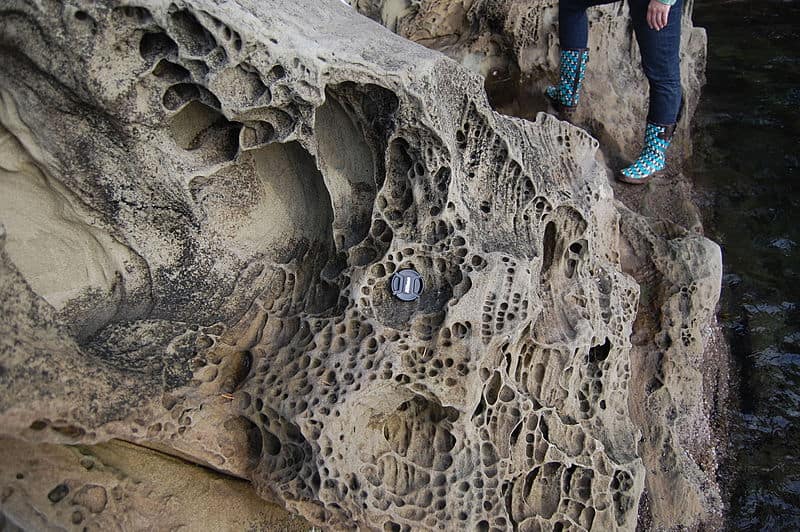
Oxidation
Oxidation, the reaction of rock minerals with oxygen, is another key cause of chemical weathering. A common example is the rusting of iron-rich minerals in rocks, which leads to weakening and disintegration of the rock.
Acid Rain
Pollution can exacerbate chemical weathering through acid rain. When industrial pollutants like sulfur dioxide and nitrogen oxides combine with atmospheric moisture, they form sulfuric and nitric acids. This acidic rain can significantly accelerate the chemical breakdown of rocks.
Biological Weathering
Microbial Action
Microorganisms, such as lichens and bacteria, can contribute to weathering. They can produce acids or other substances that chemically react with rock minerals, leading to breakdown and decay.
Plant and Animal Interactions
As mentioned earlier, plants and animals play a role in biological weathering. Beyond physical impacts, the acids produced by plant roots or the waste products of animals can chemically alter rocks.
The Geological Impact of Erosion and Weathering
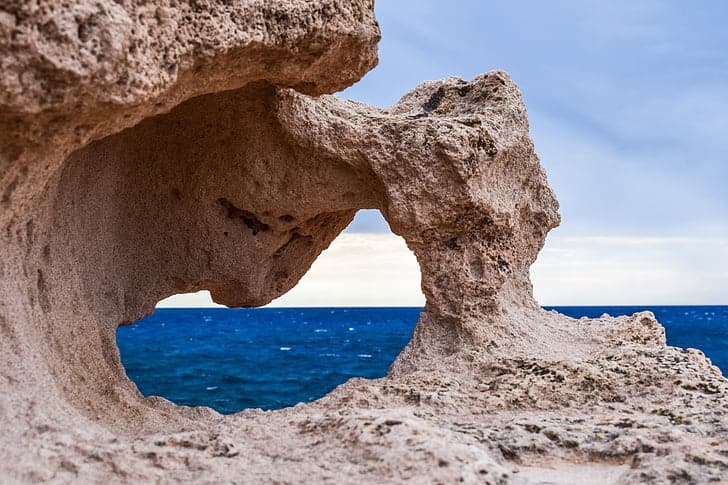
Both weathering and erosion play a key role in geological processes at the surface of our planet. They create new soils and rocks, influence climate and biodiversity, and even shape human civilization.
One of the most significant outcomes of erosion and weathering is the creation of soil, the foundation of terrestrial ecosystems. Soil formation is a direct result of these processes breaking down rock into finer particles, which, mixed with organic material, creates a medium for plant growth.
Moreover, erosion and weathering sculpt a variety of landforms. Mountains, valleys, cliffs, and plains all owe their existence to these processes.
Interestingly, erosion and weathering also play roles in regulating the Earth’s climate. The breakdown of rocks, particularly silicate minerals, consumes atmospheric carbon dioxide, a greenhouse gas. This long-term process, occurring over millions of years, contributes to the natural regulation of Earth’s climate.
Furthermore, the varied landscapes created by erosion and weathering support diverse ecosystems. From the rugged peaks that provide habitats for mountain species to the fertile plains that support a plethora of flora and fauna, these processes indirectly influence biodiversity.
Humans have long been beneficiaries of erosion and weathering. Fertile soils formed by these processes have been the bedrock of agriculture and civilization. Our ancestors settled in river valleys, where erosion and weathering had created rich, arable land. Even today, these areas remain crucial for food production.
Moreover, many of our natural resources, like minerals and ores, are concentrated and exposed through erosion and weathering, making them accessible for human use.
The intertwined processes of erosion and weathering are architects of Earth’s surface, constantly reshaping and rejuvenating our planet. From the highest mountain peak to the deepest ocean trench, every landscape bears the signature of these processes. The dance of erosion and weathering is a testament to the ever-changing nature of our planet, a reminder of the dynamic world we inhabit and the intricate balance that sustains it.






